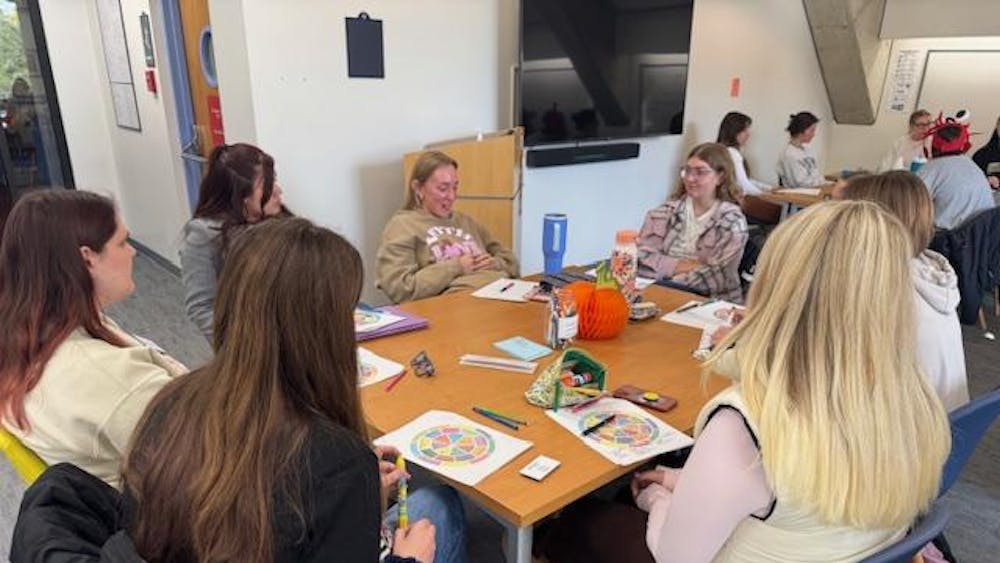In the first lecture of the “Nuclear Nightmares: Hiroshima and Nagasaki in Historical Context” exhibit, Sr. Yoko Hamada, professor at Nagasaki Junshin Catholic University, delivered a historical account of the establishment, destruction and subsequent rebuilding of Junshin Girls’ School after the atomic bombing of Nagasaki.
Hamada said part of the rebuilding efforts of Junshin Girls’ School after World War II was thanks to John Francis O’Hara, who at that time served as Bishop of Buffalo and president of the University of Notre Dame.
Hamada said that O’Hara, sent to Japan by Pope Pius the XII in 1946 to assess the condition of the Church, visited Junshin Girls’ School in the aftermath of the bombing and helped fund the construction of a new campus.
Junshin Girls’ School, founded by a fledgling order of sisters in Nagasaki, first opened its doors in 1935 to 28 girls, Hamada said. By 1939, enrollment had swelled to 387 students, 33 of whom comprised of the inaugural graduating class.
The beginning of World War II, however, caused much hardship for students, Hamada said. For a school run by a religious congregation, the persecution was especially harsh.
“The public had a strong resentment to Christianity as a foreign enemy religion,” she said. “The content of education, including religion, was strictly under control by the government. Sisters were not allowed to wear habits, and could not say prayers in Latin.”
Hamada said war efforts to manufacture weapons and ammunition meant most people lacked clothing, food and school supplies. During this time, children were sent to work in ammunition factories.
“In 1944 our students were sent to factories ... instead of going to school," Hamada said. “The education system was shut down.”
On August 9th, 1945, however, Japan’s war time-efforts came to an end, and nearly with it, Junshin Girls’ School, Hamada said.
“At 11:02 in the morning, the atomic bomb exploded,” she said. “The beautiful town became a devastating inferno. Since our school was located very close to the hypocenter, the damage was extensive.
"Since the factories where students worked were also close to the hypocenter of the bombing, many died in the factories. Others died at home under the care of their family. In the end our school was 207 students out of 700 students.”
Hamada said that though the the state of the town was beyond description, parents of the deceased students encouraged the sisters in charge of the school to start rebuilding.
In the aftermath of the bombing, the sisters took prompt action and began teaching classes in a neighboring town.
“In October [1945], classes started in a room with nothing in it, but still it was a blessing for Junshin Girls’ School,” said Hamada.
In 1946, with the help of donations gathered by Bishop John O’Hara, the sisters began constructing a new campus for their school.
Since then, both the campus and student enrollment have grown. Today, Junshin Girls’ School has an enrollment of over 1,000 junior high, high school and kindergarten students, as well as nearly 200 university students, Hamada said.
Hamada said that Junshin Girls’ School still commemorates the events of Aug. 9, 1945 and also the efforts of Bishop O’Hara in rebuilding the school.
“Every year on August 9th, a memorial service is held in the presence of our students with their whole families. We pray for the atomic bomb victims, as well as for Bishop O’Hara,” she said.
Read More
Trending









